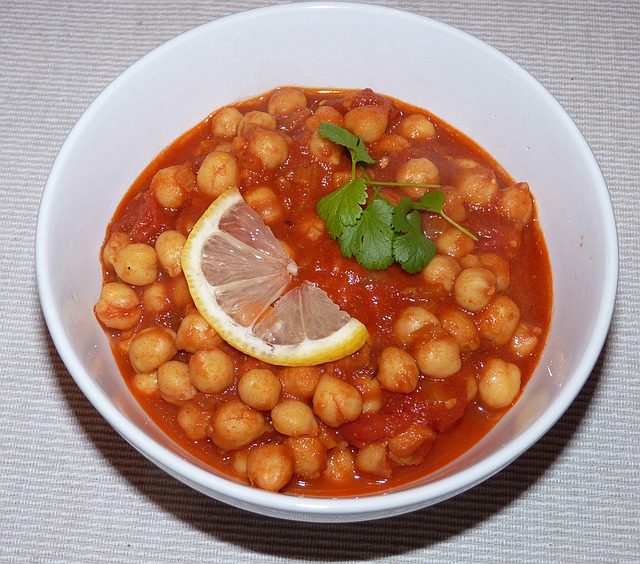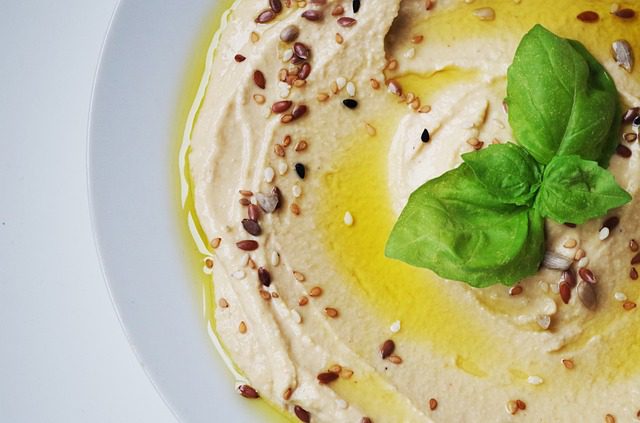Chickpeas are massive storehouses of proteins, vitamins, and minerals. Their benefits include, but are not limited to, improving digestion, aiding weight loss and preventing several diseases. They have a moderate number of calories, providing 46 calories in every 28g serving. They also contain a fair amount of fiber and protein. Chickpeas are also known as Garbanzo beans. They are protein-rich legumes.
Did you know that chickpeas were initially cultivated in the Middle East and Mediterranean regions? Proof of the existence of chickpeas has been found dating back to over 7500 years ago. It was one of the first grain legumes to be domesticated in the old world. In the year 2016 alone, over 12.1 million tons of chickpeas were produced.
Table of Contents
Watch Mishry Video: Benefits of Chickpeas
Benefits of Chickpeas
1. Chickpeas For Weight loss
Chickpeas have several properties that may help you in your weight loss journey.
An NCBI study showed that those who ate chickpeas regularly were 53% less likely to be obese and had a lower body mass index and weight circumference, compared to those who did not eat chickpeas
Another study was published on the NCBI website compared the calorie intake and energy levels of two women on two separate occasions. In the one instance, both were fed 200g of chickpeas and in the second instance, both were fed 2 slices of bread. Both of these food items are equally rich in calories. It was observed that appetite and calorie intake was significantly reduced after the chickpea meal, in comparison to the bread meal.
2. Protein in Chickpeas keeps your appetite under control
The protein and fiber in chickpeas work together to slow down digestion. This helps to make you feel full.
Protein and fiber work to slow digestion, which helps you feel full most of the time.
In fact, this filling effect of protein and fiber helps you to reduce your calorie intake throughout the day.
A study published on the NCBI website checked the effects of the supplementation of chickpeas in a regular diet. About 104g of chickpeas were consumed by individuals every day for about 12 weeks. These individuals reported feeling fuller and being able to easily cut off junk food consumption.
3. Low-calorie Food
Chickpeas have low calorie-density. Low-calorie foods help in losing and maintaining weight.
4. Chickpeas For Digestion
The amount of fiber present in chickpeas is very beneficial for the digestive system.
Chickpeas have soluble fibers that blend with water to form a gel-like substance in your gut.
The soluble fiber in chickpeas helps with the growth of good bacteria and curbs the growth of bad bacteria in your gut. This helps reduce the risk of some digestive conditions, such as irritable bowel syndrome and colon cancer.
5. Easy & Versatile
Chickpeas are affordable and very easy to include in your diet. You can make curries, hummus or even use them plainly in your soups and salads.

6. Chickpeas for Overall Health
Chickpeas are nutrient-dense and are good for people of all ages for a healthy boost to their daily food.
About 28g of chickpeas contain-
- Calories: 46
- Carbs: 8 grams
- Fiber: 2 grams
- Protein: 3 grams
- Folate: 12% of the required dietary intake
- Iron: 4% of the required dietary intake
- Phosphorus: 5% of the required dietary intake
- Copper: 5% of the required dietary intake
- Manganese: 14% of the required dietary intake
Regular consumption of chickpeas is also known to have reduced the risk of certain types of cancer such as breast and lung cancer.
7. Chickpeas For Healthy Bones
The protein in chickpeas and also known to promote better bone health and muscle strength. The quality of protein present in chickpeas is better than that of other legumes by leaps and bounds. The protein in chickpeas contains almost all of the essential amino acids.
8. Chickpeas For Heart Health
Chickpeas contain magnesium and potassium, which have the potential to boost heart health.
9. Chickpeas Are Great For Vegetarians
Chickpeas are protein-rich foods. They are perfect supplements of meat for vegetarians and vegans.
10. Chickpeas Help Manage Diabetes
Since chickpeas contain fiber and proteins, blood sugar levels do not increase immediately after consumption. They have a low glycemic index. This helps in diabetes management.
They have also been found to have reduced the risk of type 2 diabetes.
A study in The American Journal Of Clinical Nutrition showed that when 19 people included about 200g of chickpeas in their diet, they experienced a 21% reduction in their blood sugar levels compared to when they consumed meals that included white bread or whole-grain cereals.
11. Chickpeas For Healthy, Strong & Dandruff-free Hair
Chickpeas are rich in protein. They can prevent hair loss. They also contain manganese that can strengthen your hair.
The vitamin A and zinc in chickpeas may help fight dandruff. You can mix 6 tablespoons of mashed chickpeas with water and massage into your scalp. Let it sit for 15 minutes. Then rinse your hair as usual.
The zinc in chickpeas might also help prevent hair thinning.

Chickpeas have numerous benefits. Including them in your diet is very easy. You could make your favorite chana masala with them, make a salad or if you’re feeling fancy, you could make some hummus with it and have it as a dip or spread.
Easy Hummus Recipe
- Grab about 400g of chickpeas and boil them almost to a mush.
- Add a little baking soda to the water.
- This baking soda helps break down the outer skin of the chickpeas. Remember to slightly over cook this mix.
- Once done, wash the chickpeas in cold water to get rid of the baking soda flavor.
- Once the chickpeas are washed and cooled, blend them to a smooth paste.
- Add about half a cup of tahini paste to this for flavor.
- Tahini is nothing but ground sesame seeds paste.
- If the mixture is too thick you can add some water to it.
- However, remember to use cold water for best results.
- You can also add some olive oil while blending to make the paste a little more rich and creamy.
Blend up some minced garlic in a little lemon juice and leave for a few minutes. Add this slowly, as required, into the hummus.
You can even add some ground cumin to the hummus for some added kick of flavor. Blend well and serve with some olive oil drizzled on top.
What Is The Difference Between Chickpea and Bengal Gram?
The term chickpea generally tend to refer to the white chana or Kabuli chana. It is found all over the world now and is used in a variety of dishes. It is round, cream in color with a smooth outer seed coat.
Bengal gram is, what we generally refer to as, Kala Chana. It is also known as ‘desi chana’ and is indigenous to India. It is smaller compared to the kabuli chana, rust or dark brown in color and has a rough outer coating. When this gram is split into two, it is sold as chana dal.
Hara Chana
Hara chana is nothing but fresh green chickpeas. It is generally consumed during winter in some of the western parts of the country. It is often sold by street vendors as a delicious, smokey and charred snack. A hummus made with this hara chana has proven to be just as delicious and luscious as a regular hummus but with a more fresh and vibrant flavor.
FAQs
1. Is chick pea Gluten-Free?
Yes, chick pea is certified gluten-free. Both lentils and chickpeas are naturally gluten free.
2. Why does the water get a bit foamy while cooking?
When cooked, beans release a naturally occurring nutrient compound called saponins, which produce a stable foam. You can simply skim off the foam, which some people believe helps with digestion, or add a bit of oil while boiling.
3. What is aquafaba?
Aquafaba is a term created by Goose Wohlt for the cooking liquid from chickpeas. The term is loosely translated from Latin: aqua=water, faba=bean. Aquafaba was found by Joël Roessel to whip up like meringue and use no eggs! What followed was many experiments on using aquafaba in various baking recipes where eggs were replaced with chickpea liquid.
4. Can chickpeas be sprouted?
Yes. Here’s how to do it-
- Soak chickpeas in water overnight. Next day rinse the chickpeas and transfer to a muslin cloth. Wrap with the cloth ensure the cloth is lightly damp. Let it sit overnight.
- Check next day, rinse the chickpeas once again and wrap in muslin cloth for a day or more. You will see the chickpeas sprouting. You can stop the process of sprouting and make chickpea gravy, salad or anything you want.
5. Can I grow chickpeas at home?
Absolutely! After following the above steps of sprouting the chickpea bean, you can rinse chickpeas and continue sprouting for another day or two. Once the shoots are long enough to be sowed, you can plant them in little containers filled with soil for leaves to shoot. Once the shoots are healthy, transfer them to a pot or a soil patch in your garden and watch the chickpea plants grow.


